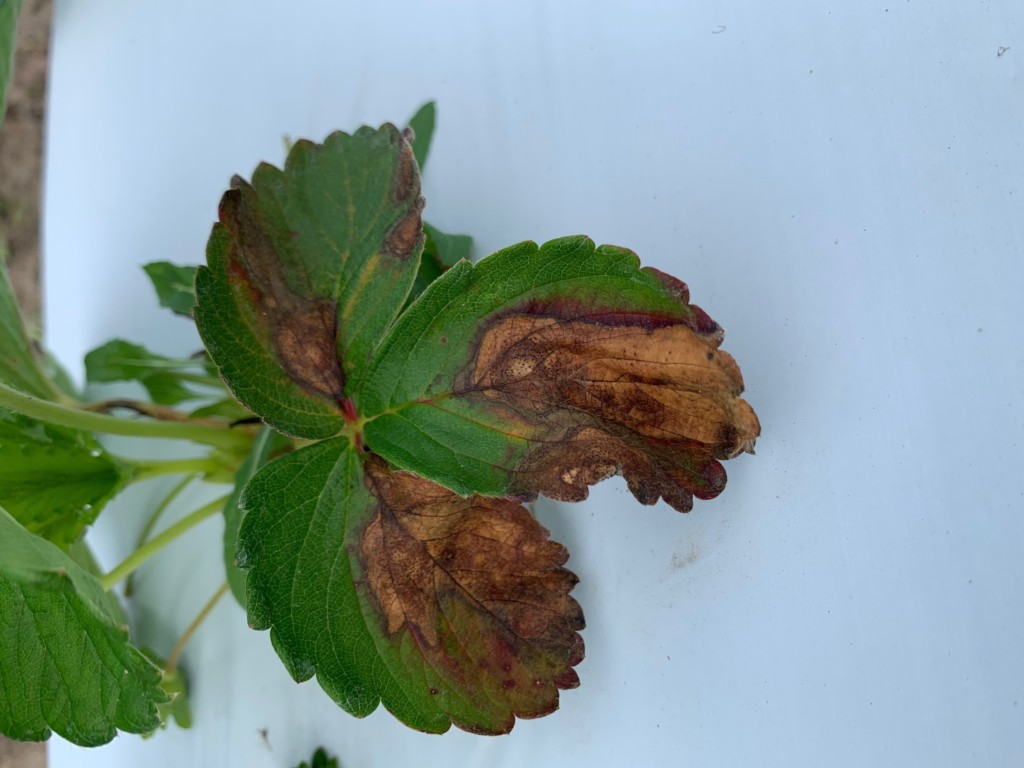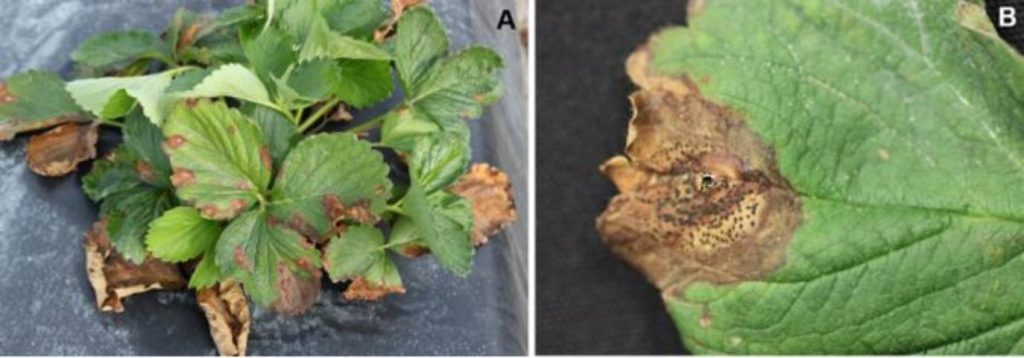The strawberry disease that has impacted Florida production since 2017 and also Georgia’s crop has finally been discovered on plants in South Alabama.
The first report of Neopestalotiopsis leaf spot disease was confirmed recently, according to Alabama Extension. Kassie Conner, Alabama Extension Specialist II, said the disease appears to have traveled in on the transplants.

The disease is important to manage, because it can cause extreme yield loss and destroy entire fields. The common link among initial outbreaks are the nurseries from where growers receive their transplants. The pathogen spreads quickly to other fields once introduced, especially after rain events.
Since the disease has been found in Alabama, growers need to be on the lookout for its symptoms. Neopestalotiopsis causes leaf and fruit spots initially and eventually infects the roots and crowns of the plant. This can lead to plant death. Leaf spots appear light to dark brown in color with various sizes and irregularly distributed on infected leaves.
For help with identification, send plant samples to the Auburn University Plant Diagnostic Lab.

If the disease is discovered in a field, limit those operations when plants are wet to avoid spreading the disease elsewhere. If it is practical, remove infected plants. Growers can also clean and disinfect equipment between fields to reduce spread of the disease.
University of Florida research shows that Switch and thiram products are the most effective at suppressing the pathogen.
Learn more from the University of Florida in their research titled, Chemical and cultivar trials to manage the new Neopestalotiopsis disease in Florida.










